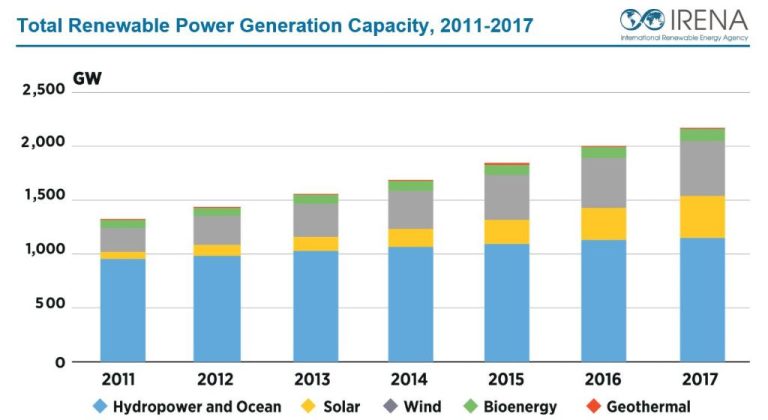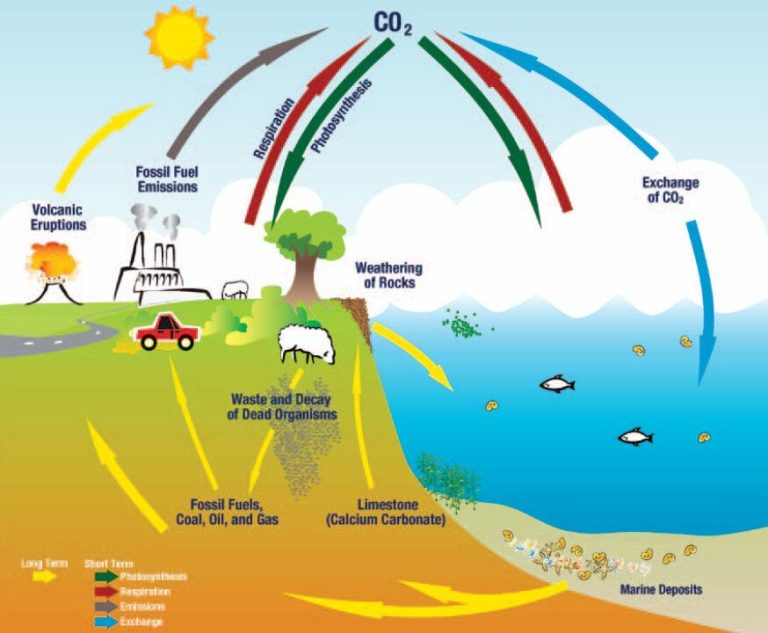What Is Radiant Energy Made Of?
What is Radiant Energy?
Radiant energy is the energy that is transferred by electromagnetic radiation or waves. It refers to energy that travels through space or any transparent medium. Radiant energy includes visible light, x-rays, gamma rays and radio waves.
Some examples of radiant energy sources include the Sun, fire, lasers, and incandescent light bulbs. Radiant energy differs from other forms of energy in that it can travel through a vacuum and does not require a medium like air or water to transfer the energy.
Radiant energy is produced when charged particles are accelerated. It is emitted in the form of waves or particles at the speed of light. The main difference between radiant energy and other forms of energy like electrical energy or mechanical energy is that radiant energy does not rely on direct contact for transferring energy.
Properties of Radiant Energy
Radiant energy travels through space in the form of electromagnetic waves. Like all electromagnetic waves such as radio waves, microwaves, infrared, visible light, ultraviolet, x-rays, and gamma rays, radiant energy travels at the speed of light. The speed of light in a vacuum is 186,282 miles per second or 299,792,458 meters per second. This makes electromagnetic waves, including radiant energy, the fastest moving waves in the universe.
Electromagnetic waves also have specific wavelengths and frequencies. Wavelength refers to the distance between consecutive wave peaks, while frequency refers to how many wave cycles pass a fixed point per unit of time. For radiant energy, wavelengths range from 10^-3 meters for gamma rays to 10^4 meters for radio waves. Frequencies range from 10^19 Hz for gamma rays to 10^4 Hz for radio waves. The wavelength and frequency are inversely related – shorter wavelengths mean higher frequencies.
Sources of Radiant Energy
Some of the most common sources of radiant energy include:
The Sun
The sun is by far the largest source of radiant energy that is accessible on Earth. The light and heat that emanates from the sun in the form of electromagnetic radiation travels over 150 million kilometers to reach Earth. Without the constant stream of solar radiant energy, there would be no life on our planet.
Fire
Fire gives off both light and heat, which are forms of radiant energy. The visible light from a flame comes from hot soot particles in the flame, while the majority of the heat is infrared radiation from hot gases. Wood fires, candles, and other controlled combustion are common sources of radiant energy from fire that humans utilize for light, warmth, and cooking.
Light Bulbs
Incandescent and LED light bulbs intentionally produce radiant energy in the form of visible light for illumination. Halogen lights also produce infrared radiant heat in addition to visible light. The light emitted by light bulbs covers a portion of the electromagnetic spectrum, typically from infrared to ultraviolet.
Heaters
Heaters like wood stoves, space heaters, and radiators give off infrared radiant heat to warm people and spaces. The coils or elements in many electric heaters can reach very high temperatures to emit maximal infrared radiation. Heaters provide focused radiant heat energy on-demand for human comfort and use.
Applications of Radiant Energy
Radiant energy has numerous practical applications that benefit society. Some of the most notable uses involve heating, power generation, and medical treatments.
One of the most common applications is heating and cooking. Sunlight contains infrared radiation, which can be harnessed to warm buildings and heat water through solar thermal collectors. Infrared radiation is also used in many cooking appliances like broilers, toasters, and stovetop burners. Microwave ovens take advantage of microwave radiation to heat and cook food.
Solar power generation relies on photovoltaic cells that convert sunlight directly into electricity. Arrays of photovoltaic panels are used in rooftop solar installations and large utility-scale solar farms to provide renewable power. Concentrated solar power plants use mirrors to focus sunlight and generate high temperatures that drive an electrical turbine.
Radiant energy has important medical uses for imaging, treatments, and sterilization. X-rays and gamma rays enable doctors to see inside the body and diagnose conditions. Radiation therapy uses high-energy radiation to destroy cancer cells. Ultraviolet lamps sterilize medical equipment and kill harmful microbes. Infrared lamps provide therapeutic heating to relieve muscle and joint pain.
Measuring Radiant Energy
There are several instruments used to measure radiant energy, the most common being radiometers, pyranometers, and bolometers.
Radiometers are devices that measure electromagnetic radiation across a range of wavelengths. They contain a sensor or detector that converts the incident radiation into an electrical signal that can be displayed or recorded. Radiometers are used in meteorology to measure solar and terrestrial radiation.
Pyranometers are a type of radiometer specifically designed to measure solar irradiance – the power per unit area produced by the sun’s electromagnetic radiation. They are calibrated to measure the solar radiation across a wavelength range of 300 nm to 2800 nm. Pyranometers produce an analog or digital signal that indicates the intensity of the sun’s irradiance at a given location.
Bolometers are instruments used to measure the power of incident electromagnetic radiation via the heating of a material with a temperature-dependent electrical resistance. As radiation is absorbed, it causes the material to heat up, changing its electrical resistance. This resistance change is measured and correlates to the power or intensity of the absorbed radiation. Bolometers can measure a wide range of wavelengths.
Radiant Energy Transfer
Radiant energy is transferred in the form of electromagnetic waves or photons. There are several ways this energy can be transferred:
Radiation – This refers to the emission of radiant energy from a source. For example, the sun radiates energy in the form of electromagnetic radiation.
Absorption – This is when radiant energy is taken in by an object. For instance, plants absorb radiant light energy from the sun for photosynthesis.
Reflection – This happens when radiant energy bounces off an object and does not get absorbed. An example is light reflecting off a mirror.
Transmission – This refers to radiant energy passing through an object. For instance, light passes through transparent materials like glass.
The transfer of radiant energy depends on the properties of the source, the medium it travels through, and any objects it encounters. Understanding radiant energy transfer helps explain phenomena like heat transfer, solar energy, and more.
Health Effects of Radiant Energy
Radiant energy can have both beneficial and harmful effects on human health. Some of the major health impacts of radiant energy exposure include:
Sunburn
Ultraviolet radiation from sunlight can cause reddening and irritation of the skin known as sunburn. UV exposure depletes melanin in the skin, damaging cell DNA and potentially leading to skin cancer over time.
Skin Cancer
Prolonged exposure to UV radiation is linked to various types of skin cancer, including basal cell carcinoma, squamous cell carcinoma, and melanoma. UV light causes DNA mutations that can lead to uncontrolled growth of skin cells.
Eye Damage
High doses of UV and other radiation can damage structures in the eye such as the cornea and lens. This can lead to conditions like cataracts, macular degeneration, and photokeratitis.
Infrared Heating Benefits
Infrared radiation can be used for therapeutic warming of the body. It penetrates deep into tissues and increases blood flow. It’s used in treatments like wound healing, pain relief, and muscle relaxation.
Radiant Energy and the Electromagnetic Spectrum
Radiant energy is part of the electromagnetic spectrum, which includes all wavelengths of energy from radio waves through visible light to gamma rays. Electromagnetic radiation is generated when charged particles are accelerated. The energy released is carried in discrete packets called photons, which travel in waves. The energy of a photon is proportional to its frequency.
The infrared portion of the spectrum consists of longer wavelength, lower frequency radiation that is sensed as heat. Infrared radiation is emitted by all objects based on their temperatures. Hotter objects emit more intense infrared radiation than cooler objects.
Visible light occupies a relatively narrow range of wavelengths from about 380 to 750 nanometers. This range can be perceived by the human eye and is responsible for the sense of sight. Visible light spectrum colors include red, orange, yellow, green, blue, indigo and violet. These colors vary based on the frequency and wavelength of the light.
Ultraviolet designates shorter wavelengths beyond the violet end of the visible spectrum. Though ultraviolet photons contain greater energy than visible light, UV radiation is invisible to human eyes. Most UV rays from the sun are absorbed by the ozone layer, but overexposure can still cause sunburns and long-term skin damage.
Radiant Energy and Quantum Physics
Radiant energy exhibits properties of both waves and particles, a concept known as wave-particle duality in quantum physics. This duality arises from the fact that radiant energy travels and spreads out like waves, but it is emitted and absorbed in discrete units known as quanta.
The quantum unit of radiant energy is the photon. Photons are massless packets of electromagnetic energy that always move at the speed of light. The energy of a photon is directly proportional to its frequency and inversely proportional to its wavelength. Higher frequency photons like gamma rays or x-rays carry more energy than lower frequency photons like radio waves.
When a photon is absorbed by an atom, the photon disappears and its energy is transferred to the atom. This causes an atomic transition to a higher energy state. When an atom relaxes to a lower energy state, it emits a new photon. This demonstrates that radiant energy comes in discrete quantized units in the form of photons.
The dual wave-particle nature of radiant energy as both continuous waves and discrete photons arises naturally from the mathematics of quantum mechanics. This wave-particle duality reflects the fundamental uncertainties inherent in quantum systems, where energy and momentum can exhibit both wavelike and particle-like properties.
Future Applications and Research
As our understanding of radiant energy continues to advance, researchers are exploring new ways we can harness it for beneficial applications. Some areas of focus for future research and development include:
Efficiency Improvements
Methods for more efficiently collecting, concentrating, and converting radiant energy into other usable forms like electricity will be critical for increasing the viability of radiant energy technologies. Advanced materials, nanotechnology, and new mechanical designs could all help increase efficiencies.
Space Travel
Radiant energy propulsion systems are being researched for deep space travel applications. The high energy density of radiant energy sources like lasers or microwave beams could be used to push sail-like structures to reach velocities necessary for interstellar travel.
Medical Treatments
Certain frequencies of radiant energy are already used in medical treatments like radiation therapy for cancer. More targeted and controlled delivery of radiant energy for medical treatment may become possible with emerging technologies like nanoscale transducers.
Overall, radiant energy holds exciting potential that is only beginning to be tapped. With greater understanding and creative applications, humanity will continue unlocking the benefits of this form of energy.







